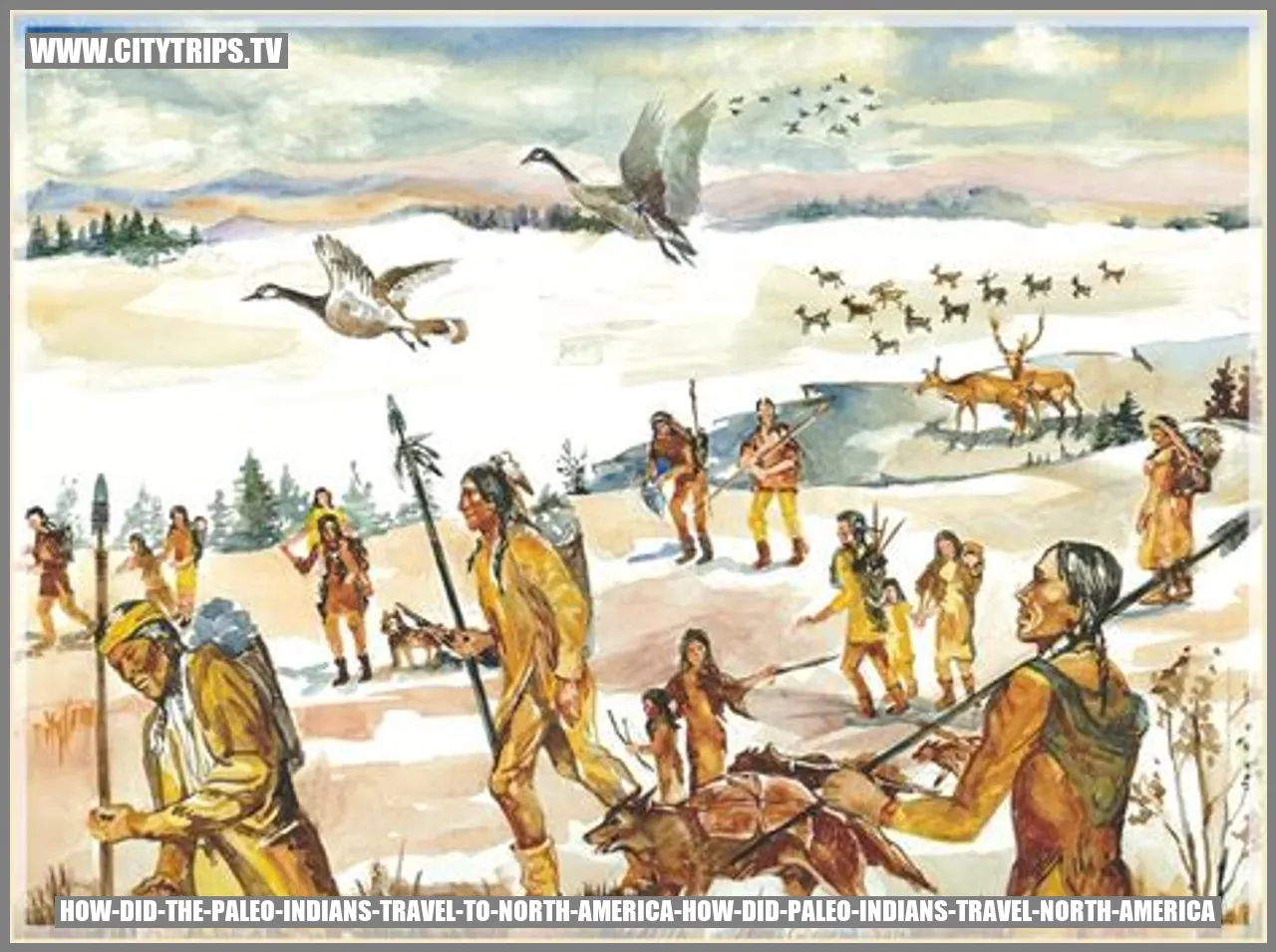
Understanding the migration of Paleo Indians
The Bering Land Bridge Theory
One of the prevailing theories regarding the migration of Paleo Indians to North America is the Bering Land Bridge Theory. As per this hypothesis, during the last ice age, a land bridge called Beringia materialized between Asia and North America due to decreased sea levels caused by global climate changes. This allowed the Paleo Indians to traverse from Siberia to what is now Alaska, crossing the land bridge.
Coastal Migration Theory
Alternatively, the Coastal Migration Theory proposes that the Paleo Indians traveled along the coastlines, relying on boats or rafts to explore new territories across North America. By following the shores, they had access to marine resources for sustenance and could navigate around obstacles that would have hindered their progress through inland paths.
Migration by Boat Theory
The Migration by Boat Theory suggests that the Paleo Indians intentionally set sail from Asia, using watercraft to cross the vast Pacific Ocean. This hypothesis implies that these ancient explorers possessed advanced navigation skills and technology, facilitating long-distance oceanic voyages. Although this idea remains contentious, some evidence, such as the presence of similar tools in both Asia and America, lends support to this theory.
Ice-Free Corridor Theory
During the ice retreat, an Ice-Free Corridor emerged in present-day Canada, potentially serving as a migratory path. This theory proposes that the Paleo Indians followed a land route southward, gradually colonizing various regions as the ice melted and opened up new territories. However, recent research has raised doubts regarding the feasibility of this hypothesis due to the timing and conditions surrounding the existence of the corridor.
The Role of Technology in Migration
The migration of the Paleo Indians to North America was heavily influenced by their technological advancements. The development of sophisticated tools, such as stone weapons and flint arrowheads, played a crucial role in their ability to hunt and survive in unfamiliar environments. These innovative technologies not only facilitated their journey but also enabled them to adapt and flourish in the diverse ecosystems encountered along their migration route.
[
Also read:
how did the paleo indians travel to america
how did the irish travel to america
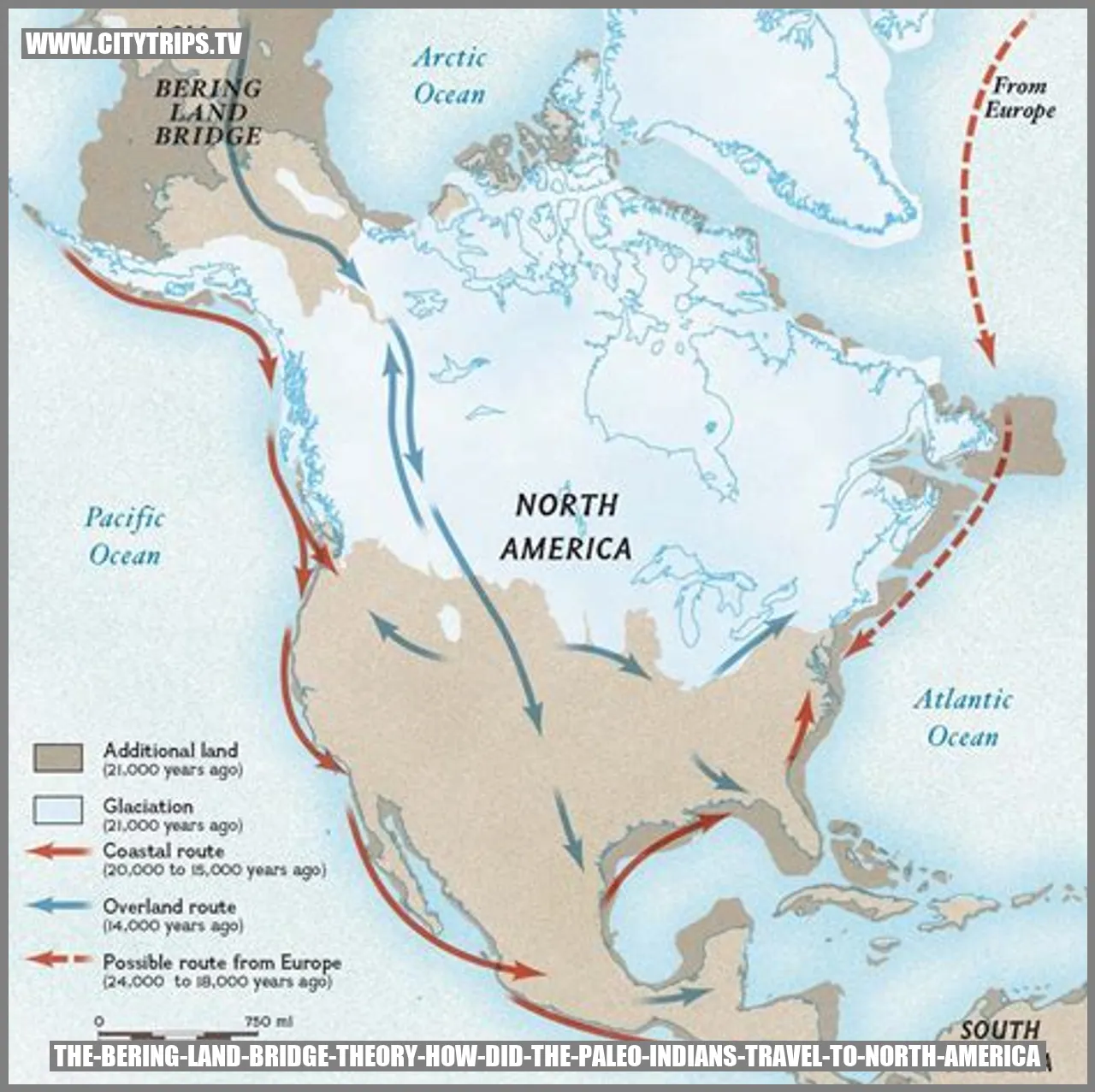
The Bering Land Bridge Theory: Unveiling a Historic Connection
The Bering Land Bridge Described
Delving into ancient times, the Bering Land Bridge, scientifically referred to as Beringia, emerged as a landmass linking Asia and North America during the last ice age. This geological pathway materialized when fluctuating sea levels exposed a vast land expanse between current-day Alaska and Siberia.
The Timeline of the Land Bridge’s Existence
Unfolding around 20,000 to 10,000 years ago, the Bering Land Bridge embodies a remnant of the Late Pleistocene epoch. This mesmerizing era encountered a frigid climate encompassing significant ice sheets that blanketed extensive regions of the northern hemisphere.
Migration Routes Amidst the Land Bridge
The emergence of the Bering Land Bridge played a pivotal role as a conducing path for our ancient ancestors to undertake migratory journeys from Asia to North America. The prevailing theory suggests that nomadic gatherings of Paleo-Indians traversed this intercontinental bridge, propelled by their pursuit of uncharted hunting grounds and new resources, harmonizing with the ancestral stomping grounds of migratory animals.
Evidence Bolstering the Bering Land Bridge Theory
Compelling evidence fortifies the credibility of the Bering Land Bridge theory. Geological and paleontological studies have unearthed substantial proof, shedding light on the land bridge’s existence, and proffering invaluable insights into its temporal and environmental context. Furthermore, genetic comparative analyses between Native American and Asian populations have revealed striking genetic affinities, solidifying the theory of migration across this transient land connection.
Tracing the Migration Patterns of Paleo-Indians from Asia to North America
The migration patterns etched by Paleo-Indians as they embarked on their momentous journey from Asia to North America played a defining role in shaping the prehistoric tapestry of the Americas. These resilient pioneers traversed the continent, deftly adapting to a kaleidoscope of geographies and nurturing the emergence of fascinating civilizations. The Bering Land Bridge operated as a gateway, facilitating this consequential migration and heralding the remarkable peopling of the Americas.
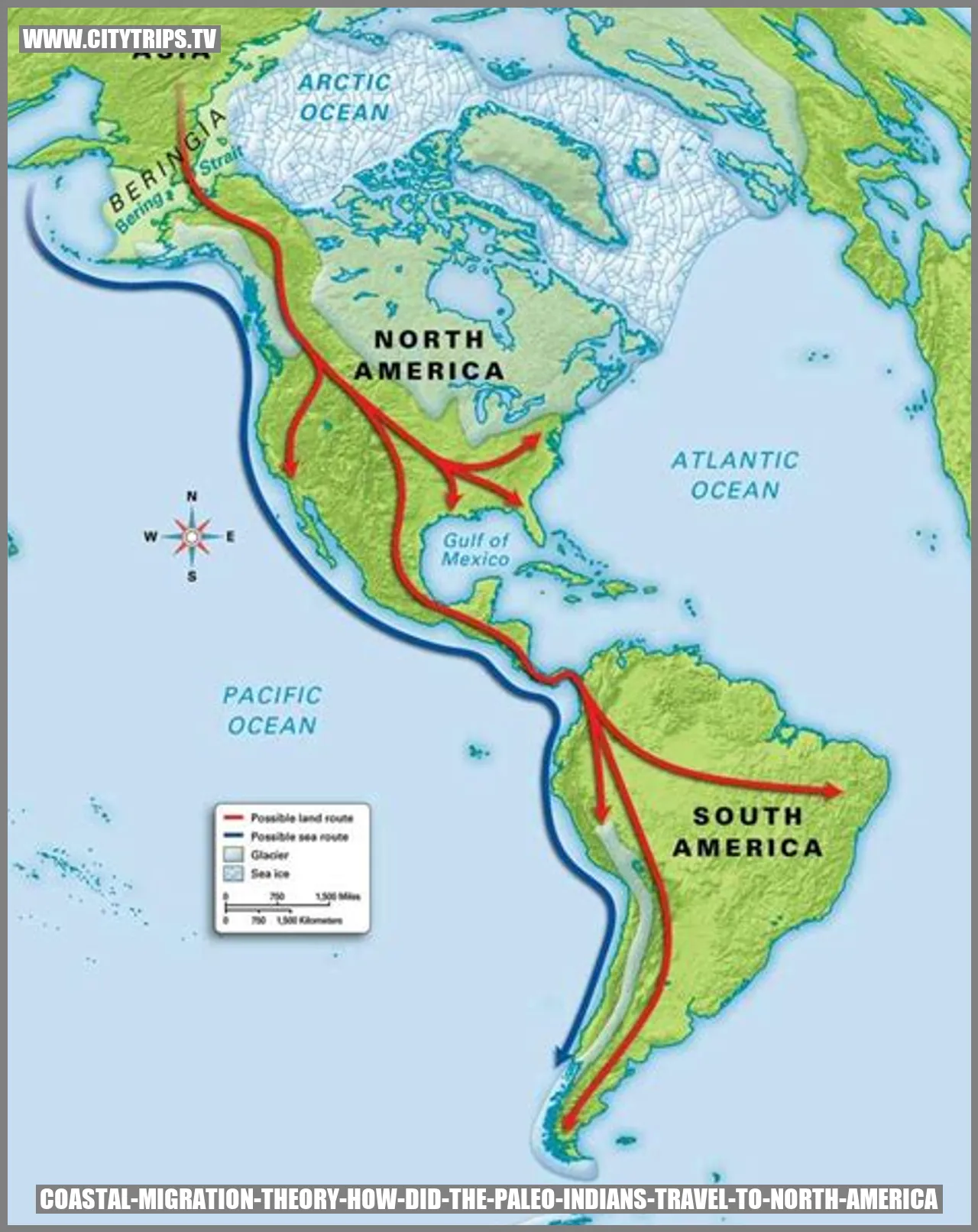
The Fascinating Coastal Migration Theory
Unraveling the Mystery of Coastal Migration Routes
The Coastal Migration Theory delves into the intriguing idea that the early settlers of North America, known as Paleo Indians, embarked on their journey alongside the coastlines. During the last Ice Age, they utilized the accessible areas along the Pacific and Atlantic coastlines, taking advantage of the abundant resources and relatively smoother paths provided by this coastal route.
Exploring the Advantages of Coastal Migration
Coastal migration held immense benefits for our ancient ancestors. Firstly, it ensured a constant and renewable food source through marine resources, including fish, shellfish, and sea mammals. Secondly, the coastal regions offered a more temperate climate compared to the harsher conditions further inland, thus increasing survivability. Moreover, these areas boasted a rich variety of plant resources, enabling settlers to sustain their livelihood with ease.
Unearthing Evidence to Support the Coastal Migration Theory
Archaeological discoveries have been instrumental in validating the coastal migration theory. Excavations along the coastlines have unveiled ancient settlements dating back to the Paleo Indian era. Furthermore, the presence of shell middens, which consist of discarded shells and remnants, supports the notion of prolonged human habitation and reliance on the bounty of coastal resources.
The Monumental Impact of Coastal Migration on Paleo Indian Communities
Coastal migration routes played a pivotal role in shaping the formation and growth of Paleo Indian settlements. The abundance of resources along the coast allowed these early human groups to establish semi-permanent settlements, leading to the development of complex social structures and cultural practices. This, in turn, facilitated the exchange of commodities and ideas among different indigenous groups.
Comparing Coastal and Inland Migration Routes
Although the coastal migration theory predominates, there is evidence to suggest that some populations also migrated inland. However, the inland migration routes posed greater challenges due to the harsher climates and limited resources. In contrast, coastal migration routes provided a more favorable environment with abundant resources, making them the preferred choice for early settlers.
By comprehending the coastal migration theory and its implications on Paleo Indian settlements, we gain invaluable insights into the initial colonization of North America. This theory showcases the resourcefulness and adaptability of our ancestors while shedding light on the geographical factors that influenced their migration patterns, shaping the remarkable cultural history of this continent.
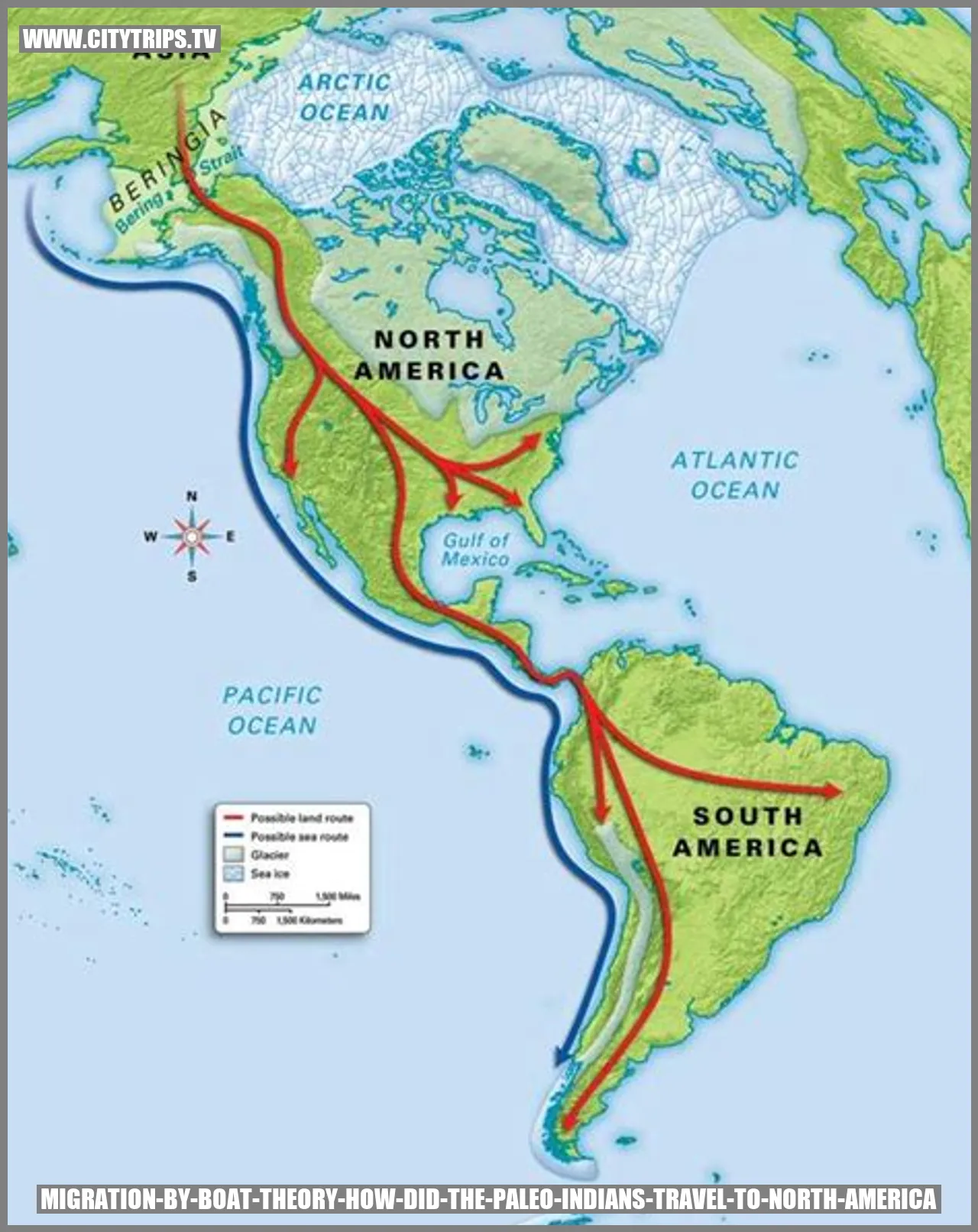
The Theory of Migration by Boat
Possible Categories of Boats Employed by Paleo Indians
Relocating from Asia, the Paleo Indians, earliest settlers in North America, are speculated to have undertaken their migration via watercraft. Though the exact types of boats used by these ancient explorers remain elusive, experts suggest that they navigated rivers, lakes, and coastlines on primitive makeshift rafts and canoes, made using logs, reeds, and animal hides. These rudimentary yet practical vessels would have facilitated the Paleo Indians’ journey across vast distances.
Advantages of Undertaking Migration by Boat
Migrating by boat provided the Paleo Indians with numerous advantages. Firstly, it granted them access to new and ample resources that were unavailable in their original homelands. By traversing rivers and shorelines, they had the opportunity to gather a wide variety of coastal resources such as fish, shellfish, seaweed, and other marine organisms. Secondly, boats served as a faster and more efficient mode of transportation compared to traveling on land. This would have expedited their exploration and colonization of new territories.
Evidence in Support of the Theory of Migration by Boat
There is compelling evidence upholding the theory of migration by boat. Archaeological findings have unveiled the presence of early human settlements along ancient coastlines and islands, indicating a maritime way of life. Moreover, the discovery of ancient tools, including fishing equipment and harpoons, further bolsters the notion that the Paleo Indians were well-versed in maritime activities. These discoveries suggest that they had acquired the necessary skills and tools to sail and exploit coastal resources.
Interaction between the Paleo Indians and Coastal Resources
The migration of the Paleo Indians by boat greatly influenced their interaction with coastal resources. As they established settlements along coastlines, they grew reliant on the abundance of marine resources available to them. This led to the development of specialized hunting and gathering techniques and an intricate understanding of the coastal ecosystem. These coastal resources not only provided sustenance but also played a significant role in shaping their culture, economy, and social structures.
Influence of Migration by Boat on Paleo Indian Cultures
The migration by boat exerted a profound influence on Paleo Indian cultures. The capability to traverse bodies of water and explore new territories broadened their horizons and facilitated cultural exchange with other groups. The integration of coastal resources into their diet and way of life impacted their dietary practices, tool technologies, and artistic expressions. This era of migration laid the groundwork for the diverse Native American cultures that flourished across North America.
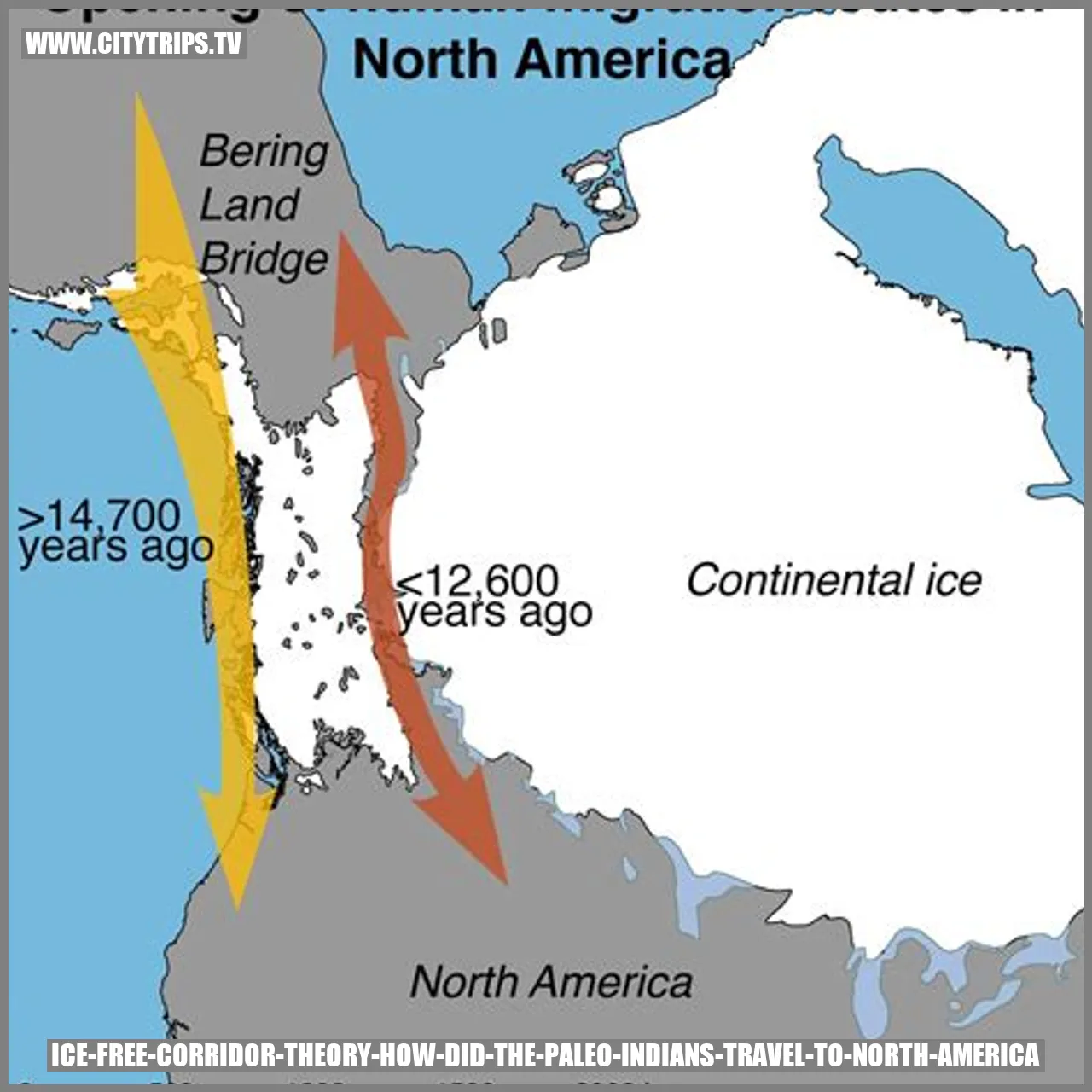
The Enigma of Paleo Indian Migration: Unveiling the Ice-Free Corridor Theory
Exploring the Ice-Free Corridor
The Ice-Free Corridor, also referred to as the Mackenzie River pathway, represents a significant geographical phenomenon situated amidst North America’s Cordilleran and Laurentide ice sheets. During the last Ice Age, it is postulated to have served as a crucial ice-free route for the migration of ancient humans from Asia to the Americas.
The Era of the Corridor’s Existence
Approximately 15,000 to 12,000 years ago, as the glaciers began their retreat, it is believed that the corridor came into existence. Evidence from this period, such as early human artifacts discovered in North America, supports the theory of migration through this particular pathway.
The Migration Routes within the Ice-Free Corridor
The Ice-Free Corridor provided a favorable pathway for Paleolithic individuals due to the comparatively favorable environment it presented in contrast to the icy surroundings. It directly connected Alaska to southern parts of North America, enabling early humans to traverse from Beringia to the interior regions of the continent.
Evidence Corroborating the Ice-Free Corridor Theory
The Ice-Free Corridor theory finds support in various scientific evidence. Fossil records, archaeological findings including stone tools and the remains of extinct megafauna, have been discovered along the presumed migration path. Radiocarbon dating and genetic studies have further unveiled insights into the timeline and origins of the Paleo Indian migration.
The Impact of the Ice-Free Corridor on Paleo Indian Migration
The existence of the Ice-Free Corridor left a lasting imprint on the settlement patterns and migratory movements of Paleo Indians. It provided a vital passageway for human expansion, facilitating the colonization of previously uninhabited regions within North America. This corridor enabled the early inhabitants to adapt to diverse environments, thus shaping the rich cultural and genetic diversity observed among Native American populations today.
In conclusion, the Ice-Free Corridor theory unravels the captivating expedition of early humans from Asia to the Americas during the last Ice Age. This noteworthy geographical feature played an integral role in shaping the narrative of Paleo Indian migration, providing a glimpse into the arduous yet remarkable tale of human perseverance and adaptability.]
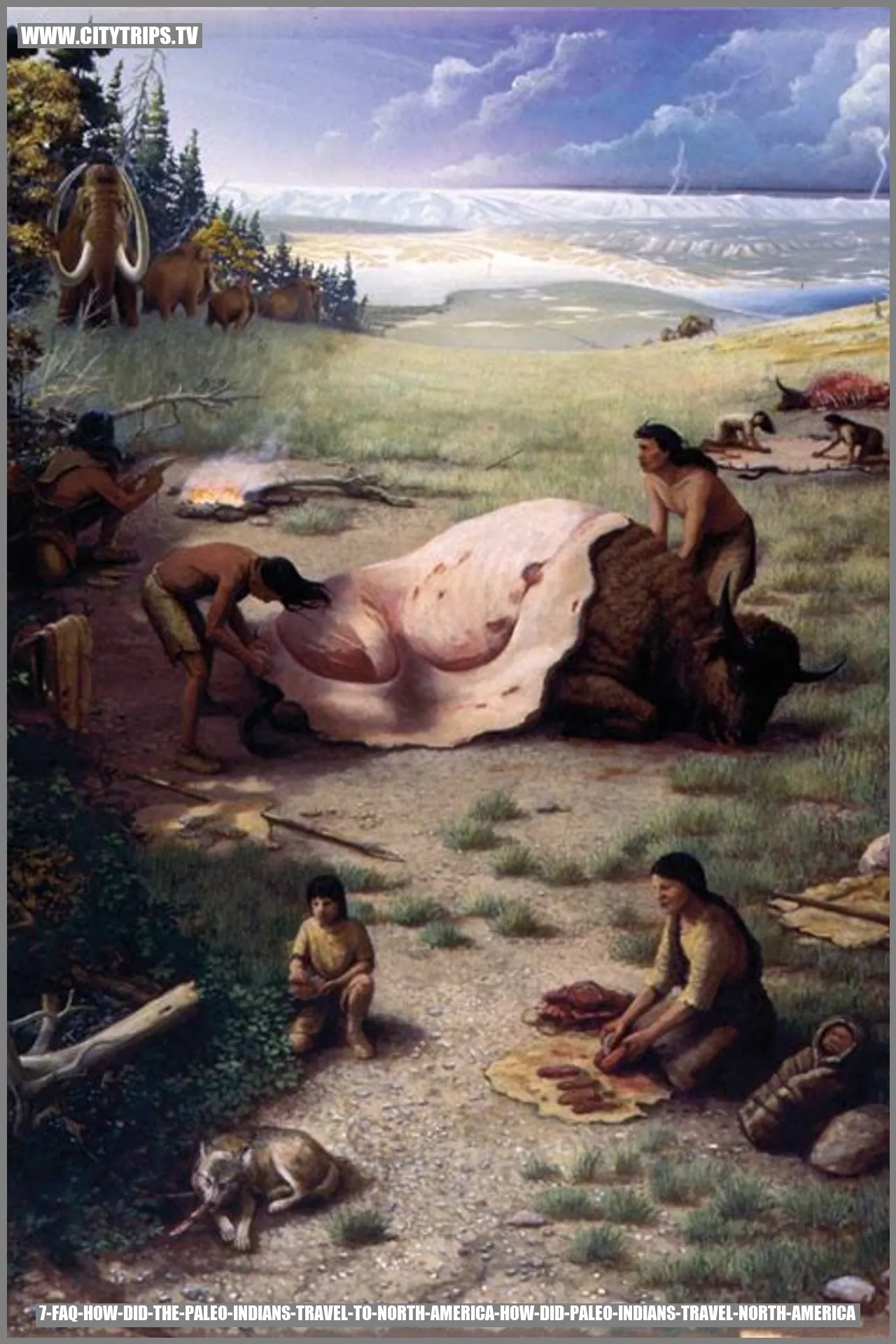
A Comprehensive Look at Paleo Indian Migration to North America
What is the prevailing theory regarding the migration of Paleo Indians?
The most widely accepted theory regarding the migration of Paleo Indians proposes that they journeyed from Asia to North America by traversing a land bridge known as Beringia.
How did the existence of the Bering Land Bridge facilitate migration?
During the last Ice Age, the Bering Land Bridge emerged, connecting northeastern Asia to what is now known as Alaska. This land bridge served as a passageway for Paleo Indians to enter North America.
What evidence supports the Coastal Migration hypothesis?
The Coastal Migration hypothesis suggests that certain groups of Paleo Indians may have opted for a coastal route instead of the inland Beringian route. This hypothesis is substantiated by archaeological findings, which include ancient coastal settlements and the identification of early seafaring tools.
What were the key factors influencing the selection of migration routes?
The selection of migration routes by Paleo Indians was influenced by several factors, including geographical characteristics, the abundance of food resources, and prevailing climate conditions. These factors determined the most practical and sustainable paths for their journey.
How did technology impact the migration of Paleo Indians?
Paleo Indians relied on a range of technological advancements, such as stone tools and weapons, to assist them during their migration. These tools enabled them to hunt, gather food, and adapt to diverse environments encountered along their journey.
Did different migration patterns exist across North America?
Indeed, various migration patterns emerged across North America. Paleo Indians dispersed and established distinct cultures in different regions, adapting to varying landscapes and resource availability. Consequently, unique cultural traditions developed among different groups.
How did Paleo Indians adapt to new environments during migration?
Paleo Indians successfully adapted to new environments during migration by acquiring novel hunting and gathering techniques, modifying their tools, and learning how to effectively utilize local resources. These adaptations played a crucial role in their survival and prosperity throughout their arduous journey to North America.]

